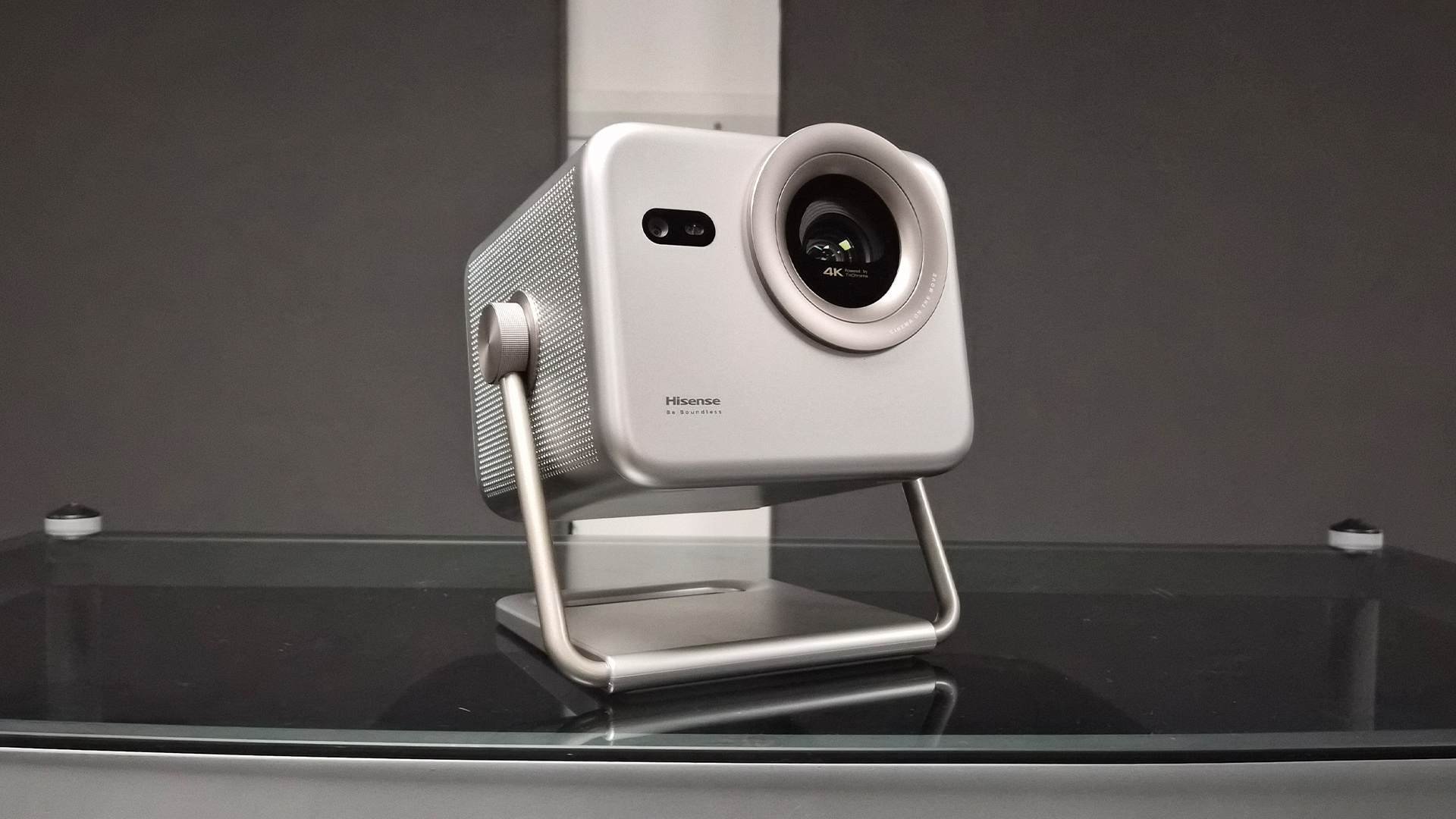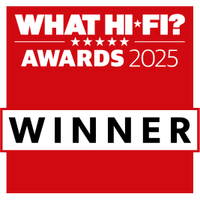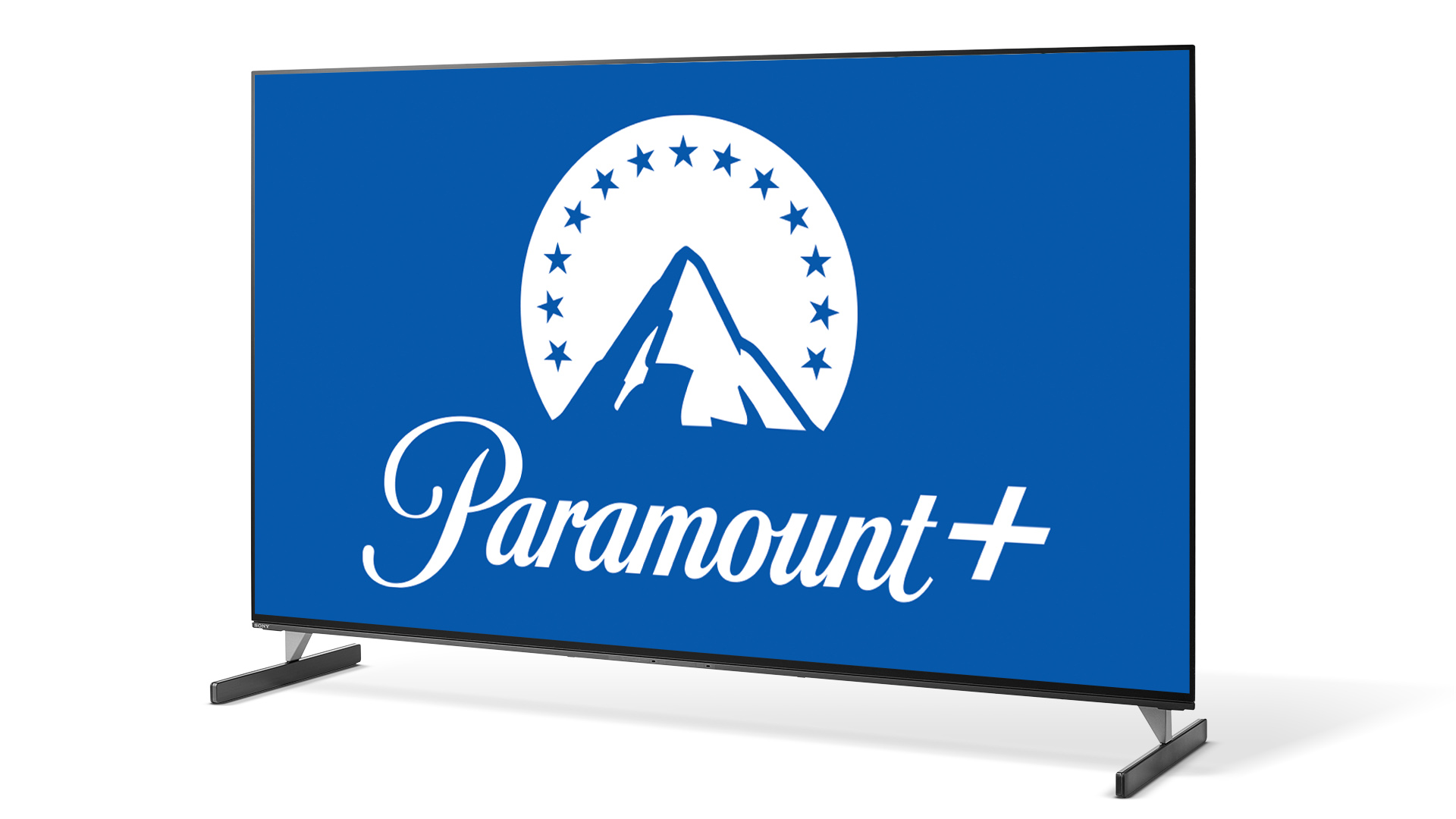What Hi-Fi? Verdict
The Hisense M2 Pro is a flexible, easy-to-use home cinema in a box that will delight its target audience
Pros
- +
Easy to set up
- +
Sharp, consistent picture
- +
Solid app support
Cons
- -
Only one HDMI
- -
Audio can sound thin
Why you can trust What Hi-Fi?
The Hisense M2 Pro (aka the Hisense M2TUK Pro) is one of the latest wave of coffee table projectors aiming to offer movie fans a home-cinema-in-a-box experience.
What makes it interesting is that it is by far one of the smallest and lightest we’ve seen, weighing a very portable 3.9kg.
Add to this competitive pricing, and the M2 Pro becomes an alluring prospect for any movie fan looking for a decent projector that’s quick and easy to use on the fly for the odd movie night, without needing to be a permanent fixture in the lounge.
But, with the market increasingly choc-a-bloc full of rival products, many of which have fallen just short of earning that hallowed fifth star from our reviewers, is this enough to make the M2 Pro succeed where others have failed?
Here’s what we found after thoroughly putting it through its paces in our viewing rooms.
Price
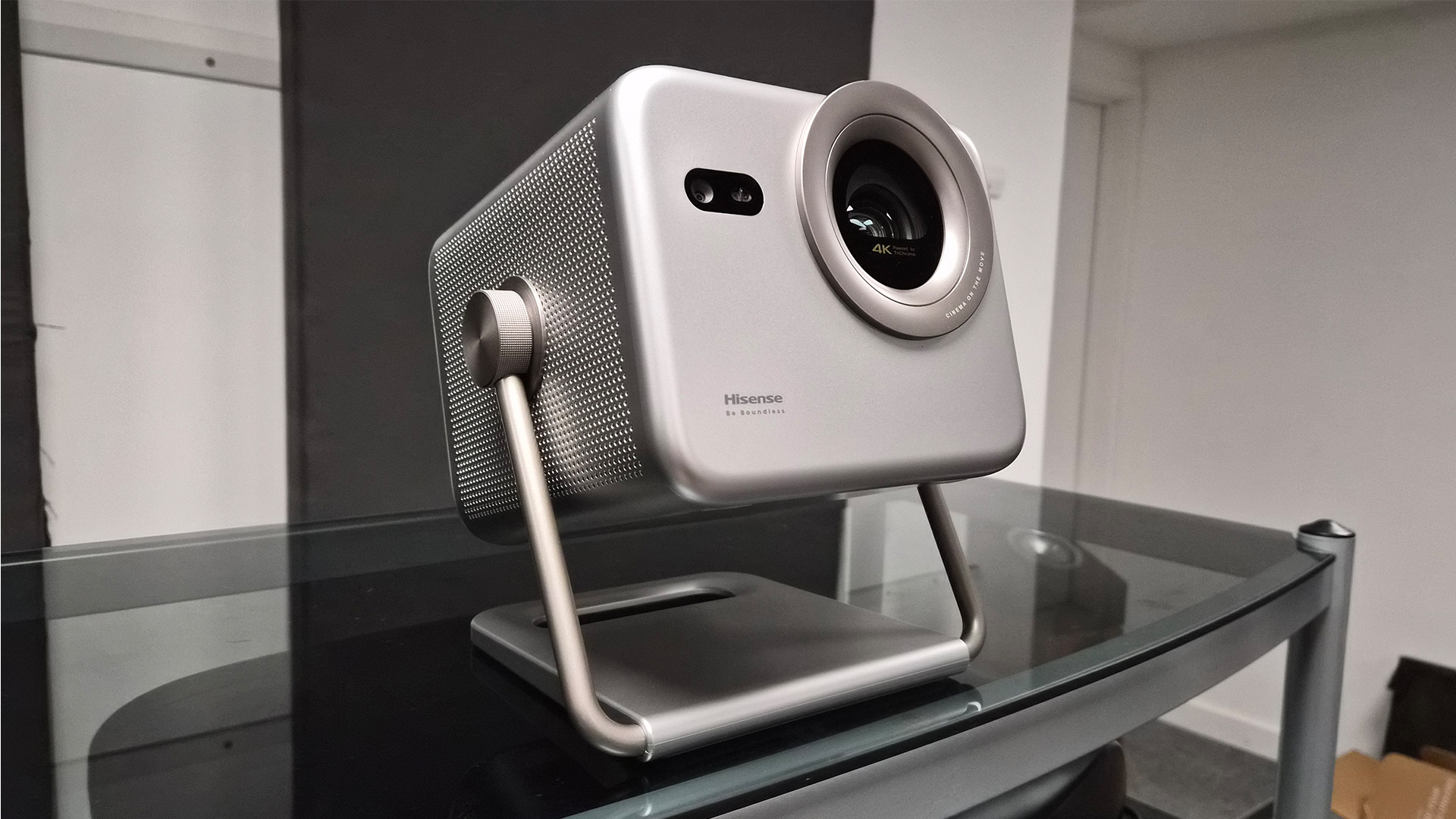
The Hisense M2 Pro sits in the lower-mid segment of the coffee table market, costing £1299 / $1299 / AU$2495 at launch. Since then, its price has already dropped, with many retailers offering it for £999 in the UK at the time of publishing.
And while that’s still a lot compared to most portable units, including the £509 / $499 Xgimi Mogo 4, which more casual projector buyers may also be considering, it’s actually quite competitive in the realm of more 'serious' models.
The latest hi-fi, home cinema and tech news, reviews, buying advice and deals, direct to your inbox.
The price places it firmly below the five-star BenQ X3100i, for example. This costs £2099 / $2399 / AU$3599. Hisense's step-up sibling, the Hisense C2 Ultra, is also considerably more expensive, launching with a hefty £2499 price tag.
It also lets it hit a currently under-served segment of the market, with the only direct rival we’ve tested recently that’s like-for-like being the four-star Epson EF-72, which costs £1150 / $1000.
Build
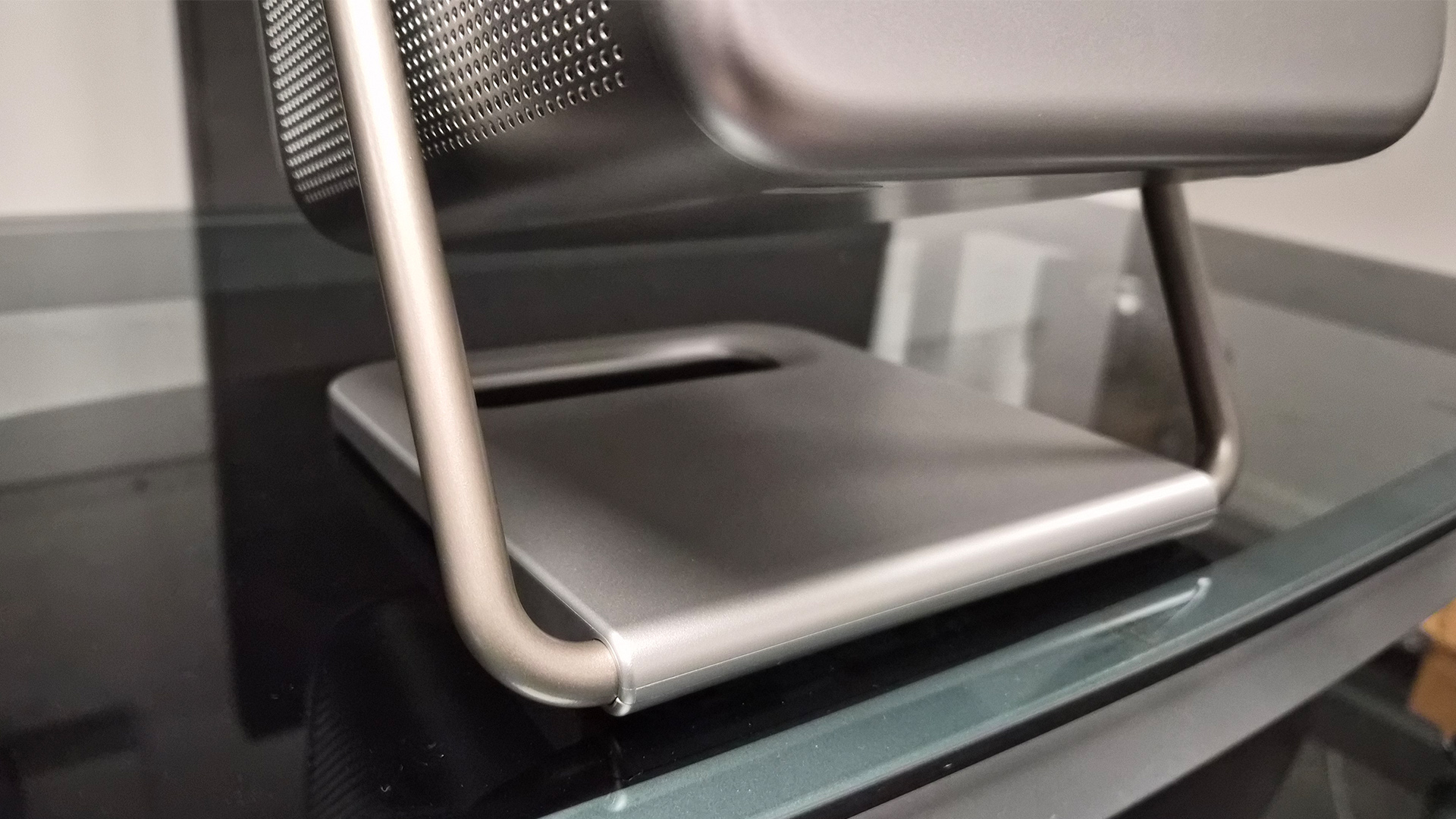
The Hisense M2 UK Pro ticks all the right boxes from a design standpoint.
It’s a small, unassuming box, with a spherical glass lens at its front and speakers at its sides, and it's bolted onto a square swivel stand.
The stand is hinged, which makes it easy to adjust the angle of the image. There's also a common thread adapter in the base, which opens up the possibility of mounting the projector to the ceiling.
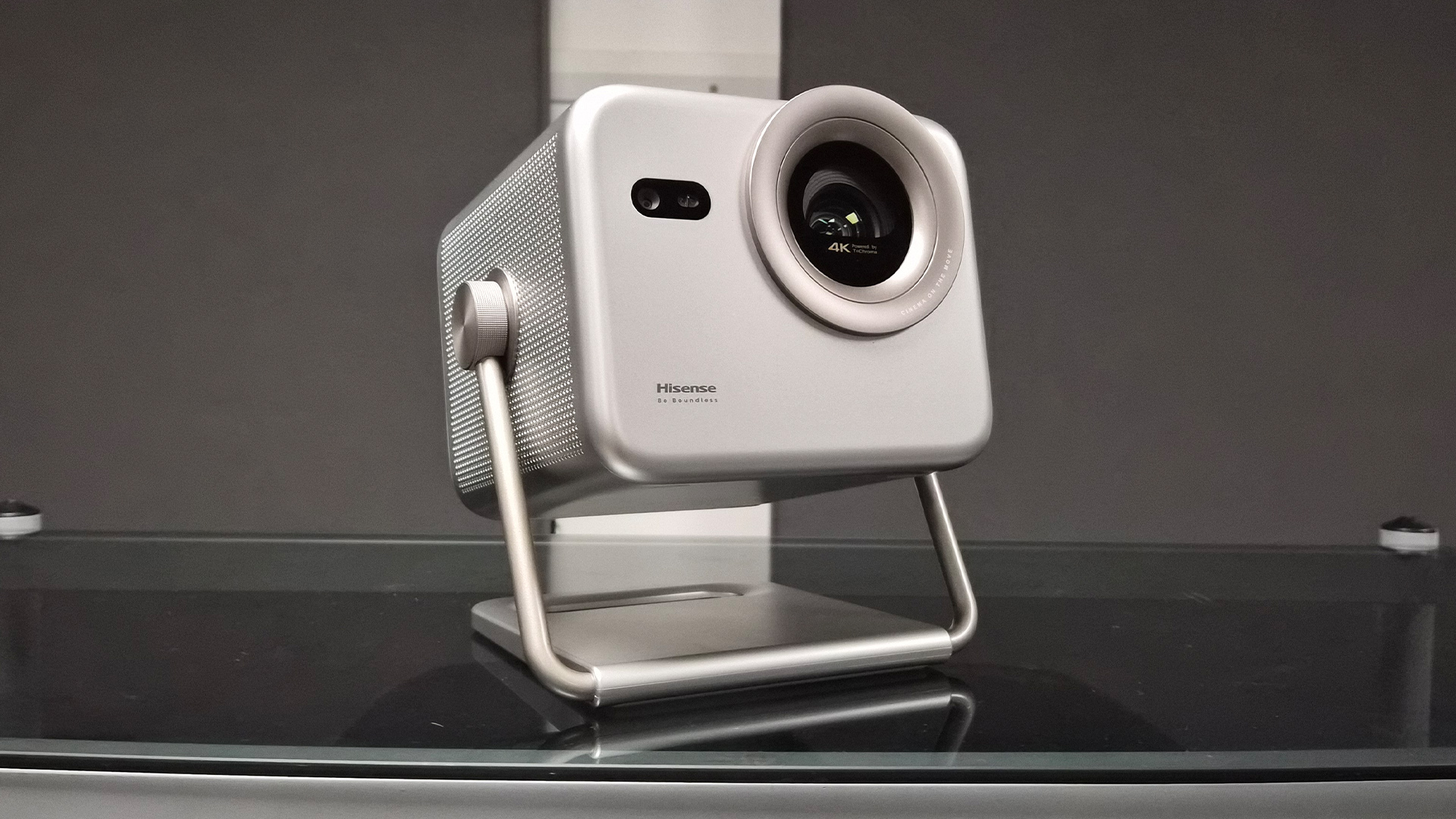
Projector type DLP (RGB Triple Laser)
Screen size Up to 200 inches (claimed)
Native resolution 4K (via pixel shifting)
Input lag 12ms
HDR support HLG, HDR10, HDR10+, Dolby Vision
Dimensions (hwd) 42 x 30 x 28cm
Weight 3.9kg
A few years ago, these swivel designs weren’t in vogue, with most makers assuming you’d get a separate stand or relying on switches on the bottom, most of which only had one angle and height option.
So, unless the stars aligned and it sat naturally at the exact angle and height you needed, at whatever distance you placed it, things weren’t optimal, even with auto correction. The M2 Pro does, of course, have that, too, in the shape of Hisense's custom AutoMagic AI Adjusting System 2.0.
The unit’s 1.0 to 1.3:1 throw ratio is also suitably flexible to let it function in most living rooms and bedrooms. This lets it throw up a 65-inch image at distances between 1.4m and 1.9m.
From there, screen size grows in line with the amount of space you give it until capping at 200 inches at a 4.4m-5.8m throw distance. Optical zoom functionality also lets you scale down as required.
The combination works a treat, with the auto correction in particular delighting our testers. Within minutes of plugging it in, we had managed to get the image perfectly projected onto our screen.
As an added perk for those who want to store it out of sight when it’s not in use, the M2 Pro even comes with a carry/storage case, which is a nice touch that shows a lot of thought has been put into its design.
This remains the case with its small but intuitive remote control, which comes with a backlight – something most projectors at its price don’t have, despite their focus on being used in dim conditions.
Features
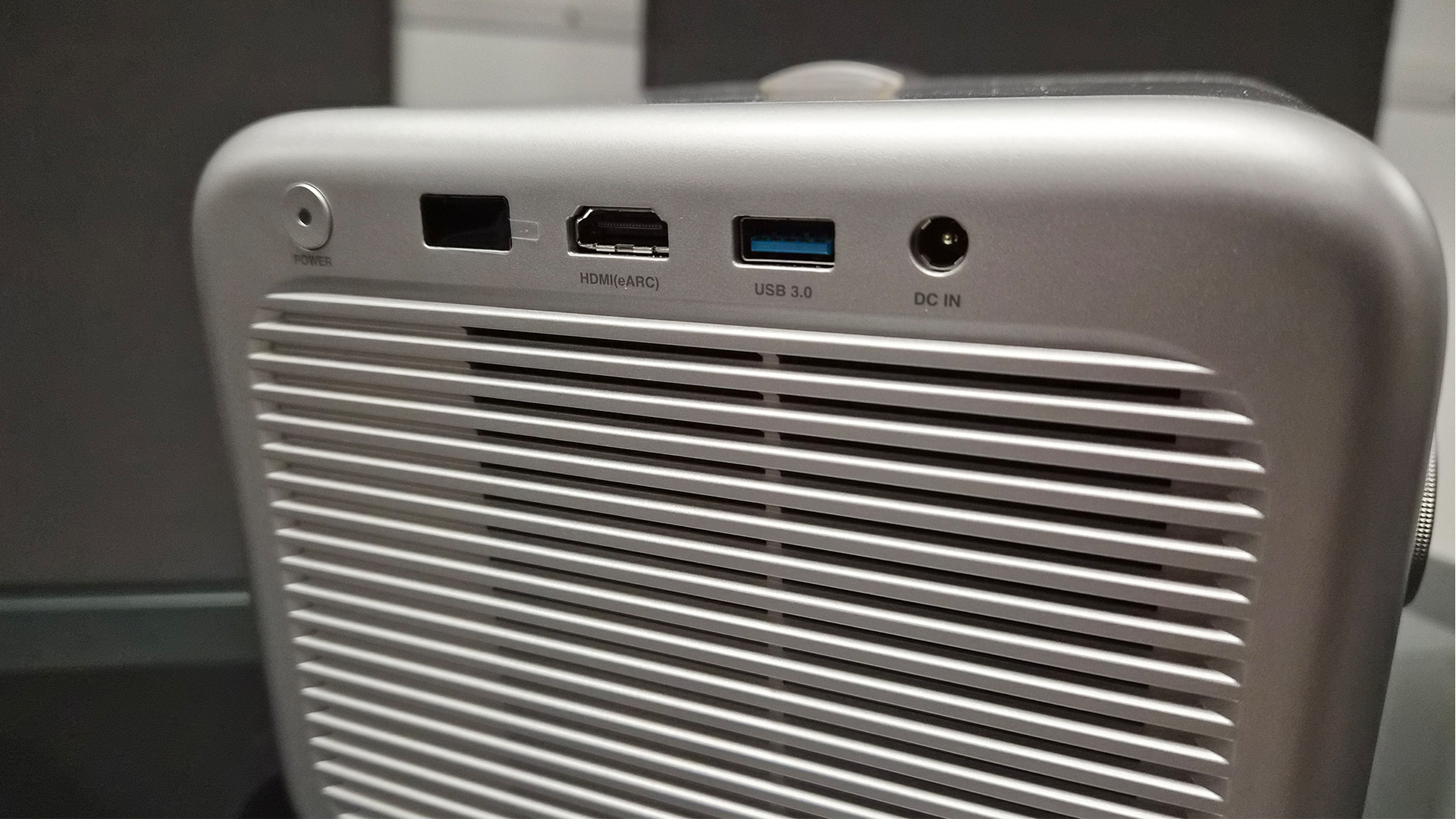
The M2 Pro is packed with a fairly reasonable specifications sheet that should tick all the boxes for its intended market, at least if films and TV shows are your primary focus.
The headline feature is its use of Hisense’s Trichoma Laser technology. This is a fancy way of describing the DLP light source it uses, which aims to improve picture quality using three individual lasers to create the red, green and blue parts of the image. We’ve seen this on numerous other projectors, including last year’s Hisense C1.
This, plus AI wizardry provided by its image processing, lets the M2 Pro deliver 110 per cent coverage of the BT.2020 colour gamut favoured by creatives and a 0.9 Delta E score (anything below 1.0 is considered pretty amazing by home cinema standards).
But before you get too excited, as ever, Hisense has kept quiet about what specific settings are required to hit those levels of accuracy.
For people unwilling to invest in a projector screen (something you really should do, as it makes a big difference to picture quality), there’s also AI-powered colour correction, which aims to make the M2 Pro work better when used with a plain wall.
Brightness levels are also impressive, with a claimed peak of 1300 lumens. This is 300 lumens higher than its direct rival, the Epson EF-72, which peaks at 1000 lumens. This potentially makes it better suited to the sort of bright environments that a semi-portable projector might be expected to perform in.
HDR support is superb, with the M2 Pro working with all four of the currently available formats: HLG, HDR10, HDR10+ and Dolby Vision.
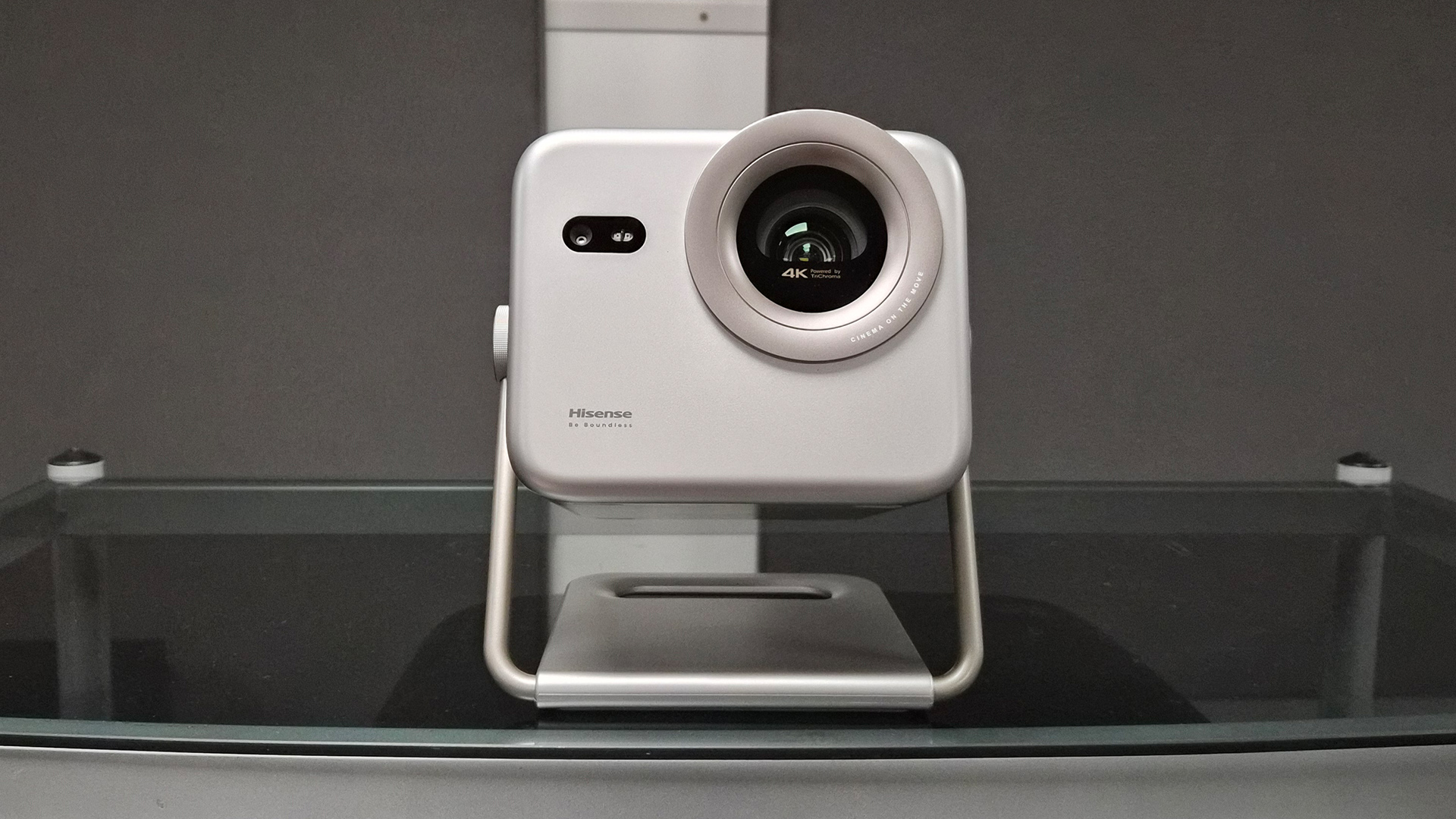
The use of Hisense’s VIDAA platform is also, generally, a positive. The OS is intuitive to navigate, not as ad-heavy as many rivals, and includes the BBC iPlayer app in the UK. Most rival projectors use the Android/Google TV platform, and precious few manage to deliver the iPlayer app.
Add to this support for all the usual suspects, including Netflix, Disney+, Amazon Prime Video, Apple TV+, and it will serve most people’s needs – especially in the UK, where Freely is also supported.
The sound system supports the Dolby Audio and DTS Virtual X surround-sound formats, but Dolby Atmos isn’t on the cards. This isn’t a dealbreaker, though, as that’s to be expected on a projector in this class.
There are a couple of minor annoyances to contend with, however.
First, it has rather limited physical connectivity. Around the back, you’ll only find one HDMI 2.1 input, a single USB 3.0 and a power connector. That’s it. So if you want to connect a Blu-ray player and games console, you’ll have to be willing to swap cables in and out fairly regularly.
The other minor point of interest is that, despite featuring what Hisense refers to as an HDMI 2.1 socket, the M2 Pro doesn't support gaming at 4K/120Hz. This is normal for projectors at this level, but the mention of HDMI 2.1 raised our hopes.
Instead, it will only run games at a max of 60Hz in 4K, which will be a minor annoyance for gamers, as current generation consoles won’t be able to run at their max refresh rates in 4K.
An enhanced game mode offering the ability to run games at higher frame rates (up to 240Hz) in 1080p softens the blow for gamers a little.
The other thing to point out is that this is of course not a native 4K projector. Like pretty much all of the projectors we’ve tested under £4000 / $4000, it uses pixel shifting to get up to 4K.
This is a clever trick where a projector shoots out two overlapping lower-resolution images to artificially create a single 4K image. In the past, it’s been a big issue as the results were very mixed, but recent advances mean performance is now a lot better, despite native 4K still being superior.
Picture
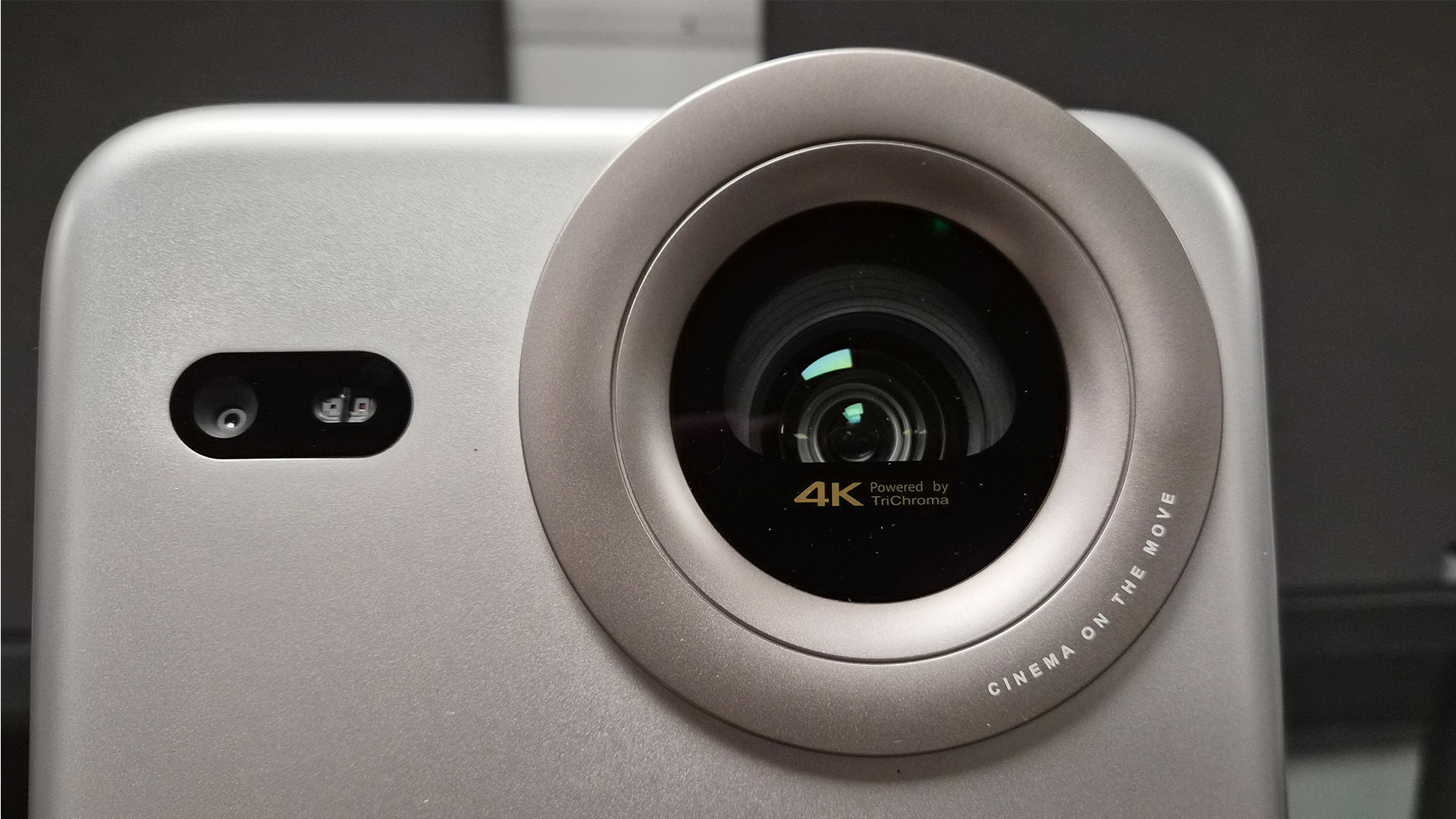
Paired with our trusty Oppo UDP-203 4K Blu-ray player, the M2 Pro proves to be a solid performer after a few tweaks to its settings.
Out of the box, it is a little too heavy-handed in its native settings. Playing one of our new favourite test scenes from Thunderbolts, motion handling is a bit off, with characters’ movements feeling artificial and too floaty, with contrast and colour temperatures also too aggressive.
Thankfully, things rapidly improve when we switch to the projector’s Filmmaker Mode. All we find necessary to change from there is to select the lowest Film setting for motion processing and the Warm 2 colour profile.
Once done, the projector performs nicely, delivering a consistent performance that never pushes beyond the M2 Pro’s capabilities, which makes for a nicely immersive and more mature home cinema experience than we had expected.
Skin tones in particular hold a nice warmth, but never deviate into overcooked territory in the way that past Hisense projectors, including the C1, have. Yelena and Bob’s faces retain detail and look lifelike even in challenging mixed-light scenes.
Our only minor quibble is that there are very brief moments when the rainbow effect occurs during some panning shots – though it is, thankfully, infrequent.
Dark detail is also reasonably well handled, with Hisense avoiding falling victim to the common mistake of trying to overcompensate for a projector’s naturally imperfect black level by cranking the contrast too high, making the picture look unintentionally like a Frank Miller comic in the process.
This means there’s a decent amount of detail in the soldiers’ pitch black uniforms, despite there being some minor black crush.
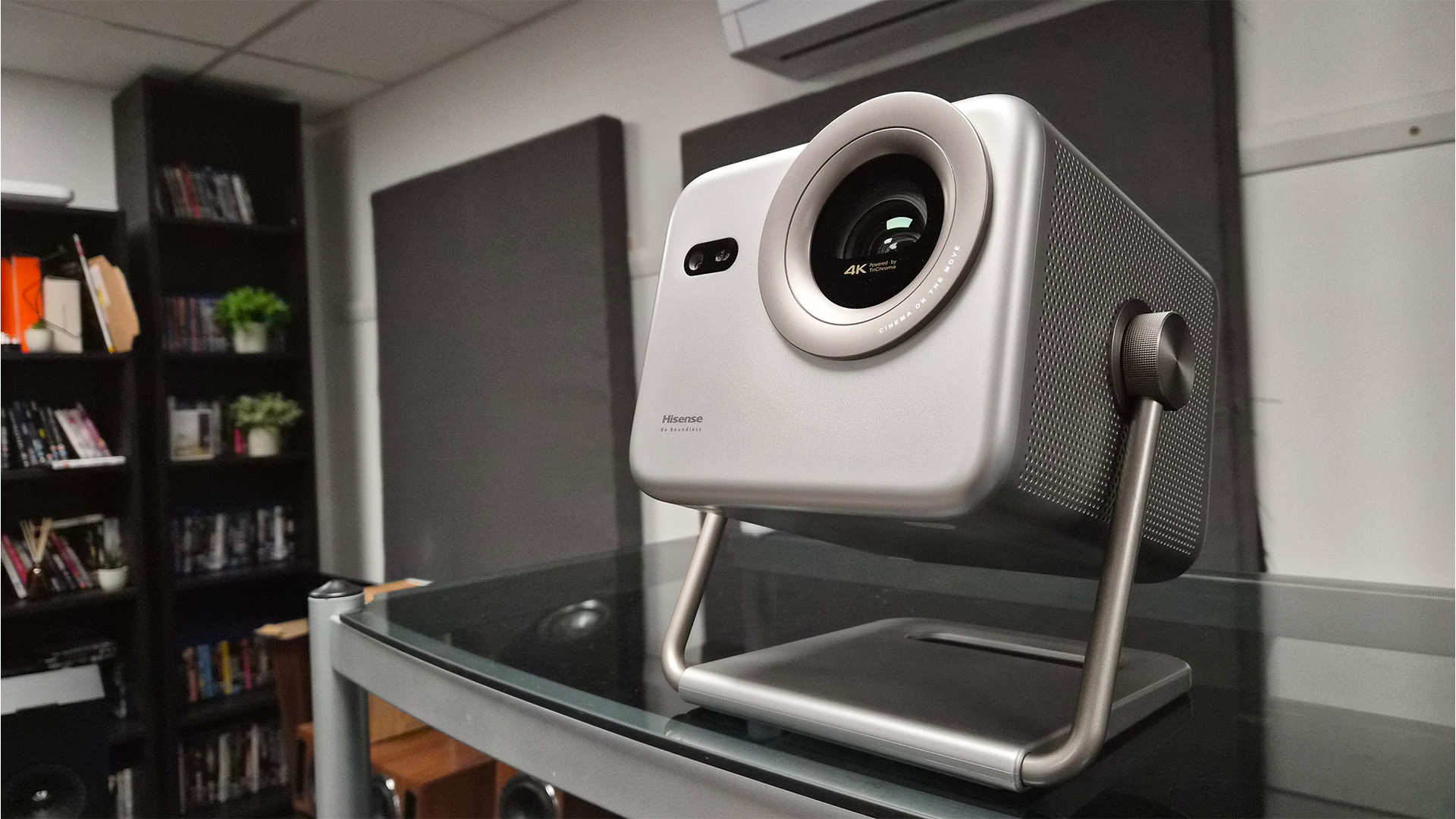
We switch to our Alien: Romulus test disc, whose opening scene is incredibly difficult for many TVs to handle in terms of dark detail.
Some fine details of the space nebula are lost, parts of the spaceship suffer from black crush, and the projector misses some subtle details that are clearly visible on the more expensive BenQ X3100i, but the Hisense still does an admirable job overall, particularly given its price.
The ship’s edges are suitably defined, as are details such as the ridges in its metal hull, which are lost and oversoftened on many rivals, including the Xgimi Horizon Ultra. This lets it retain a sense of three-dimensionality despite the slight imperfections.
The M2 Pro continues to punch above its weight as we move to Civil War. During a scene in which a car races through a burning forest, the flames have a wonderful hue of red and an intensity that makes them suitably distinct from the silhouette of the background forest.
During a panning shot, the movement of a squadron of helicopters looks smooth but authentic, with no ghost frames or artefacts creeping in as they swoop into Washington.
Colours continue to pop but retain their realism as the film transitions to a night-time battle. There’s a nice amount of contrast, and tracer bullets across the night sky look fantastic, retaining a precisely controlled burn. Buildings look nicely sharp, too, all helping to create a truly immersive experience.
It’s only when we swap over to the more expensive BenQ X3100i that we see radically improved results. Here, there’s more detail in the darkest and brightest areas, with everything from explosions to characters’ faces in difficult mixed light holding a smidgeon more detail.
This remains the case when we move to our Pan test disc, which is our peak brightness stress test due to the film’s atypically high 4000 nits mastering. The Hisense does an excellent job, with highlights in a blob of water in the sky retaining a pleasing range of colours and every ripple looking sharp and three-dimensional.
But it hasn't got quite as much contrast in the skyline as the BenQ, and there’s undeniably some detail lost in the sun, which comes across as pure white rather than very slightly red and orange.
But, again, considering the disparity in price, the Hisense’s performance is to be applauded, and it's surprisingly competitive.
This adds up to make the M2 Pro one of the best performers we’ve seen in its class when it comes to picture quality.
Sound
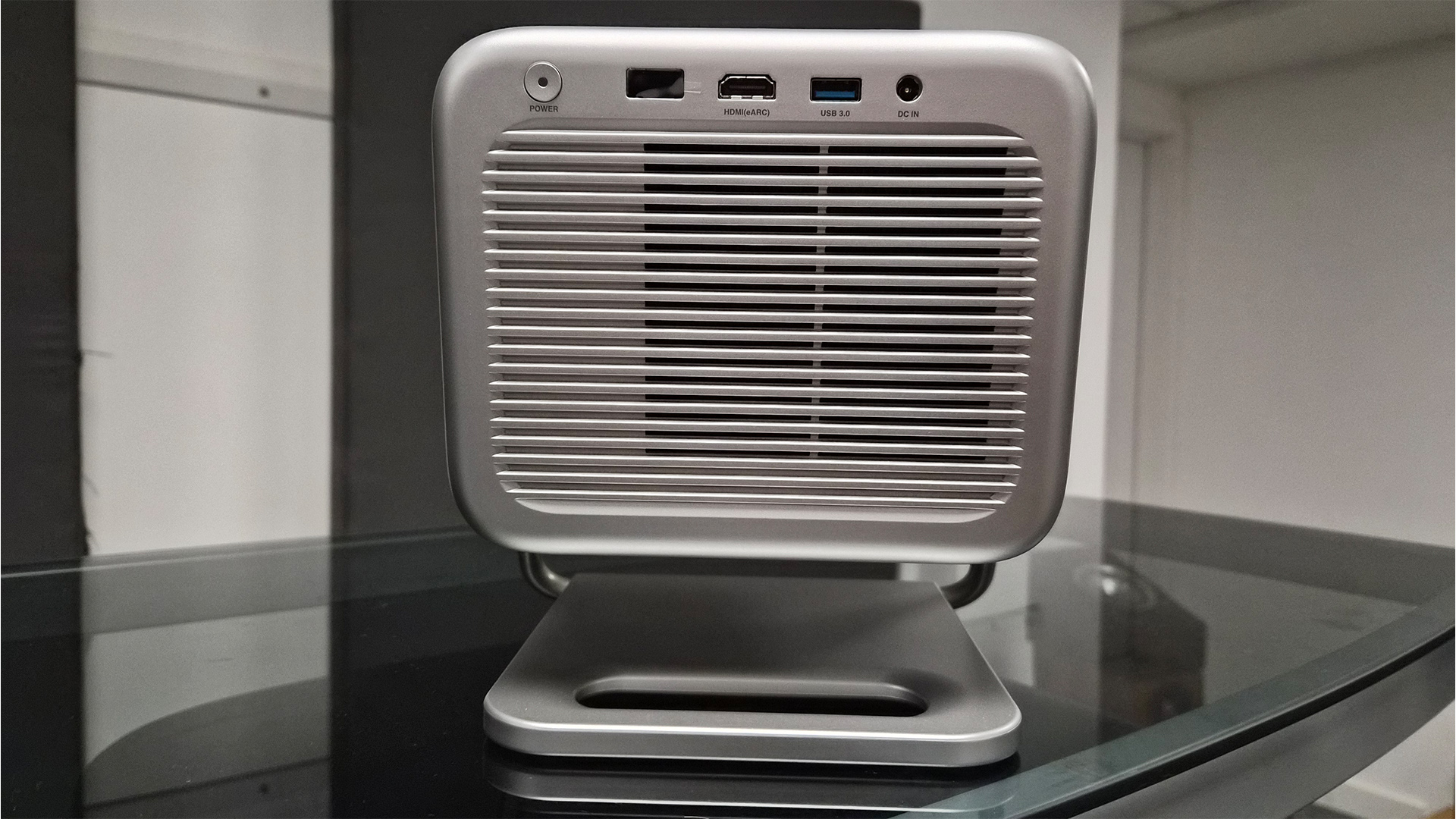
The M2 Pro has a 2.0, 10W in-built speaker system. Unlike its fancier C2 cousin, this is a purely Hisense system – there’s no partnership with JBL or any other audio specialist.
And for standard TV viewing, or as a basic unit to keep the kids entertained, it's generally fine – in some ways even good, at least by in-built speaker standards.
The unit produces a surprising amount of sound volume for such a small package. Even in its standard setting, the twin speakers offer enough clarity and separation to keep voices and background noise separate enough for comfortable viewing while we stream an episode of Schitt’s Creek.
Playing Oppenheimer, characters’ voices are clear, but the background string section slightly intrudes during certain intense parts. Switching to Theatre mode rapidly improves things, and dialogue and the soundtrack stay in their respective lanes.
Moving to a nighttime battle scene during Civil War, the M2 Pro continues to do an admirable job.
Though it's only a stereo set-up, the sound of helicopters entering a military camp has a clear sense of direction, and there’s a decent amount of volume – to the point that anything above 25 sounds too loud in our listening rooms
It deals with this demanding, noisy scene well, offering each sonic part suitable space. At the start of the scene, the hushed whispers of characters creeping through the pitch black street are audible while the background gunfire offers some sense of directionality and bite.
But as the scene grows more intense, the system loses its composure. A haunting guitar track pushes the speakers too hard, causing distortion to creep in.
The engine noise of incoming helicopters also pushes the low end too hard, creating some distortion, and the sound generally lacks the heft to do it justice. The engine noise is flabby and lacks suitable definition.
Sibilance creeps in as a violent gun battle ensues, both in the sound of the bullets flying across the screen and characters screaming over it.
The combination of an underpowered low-end and a sibilant high end creates a thin, at times acidic, quality during the most intense parts of the battle.
This adds up to make it good by small, coffee table projector standards, but not perfect.
Verdict
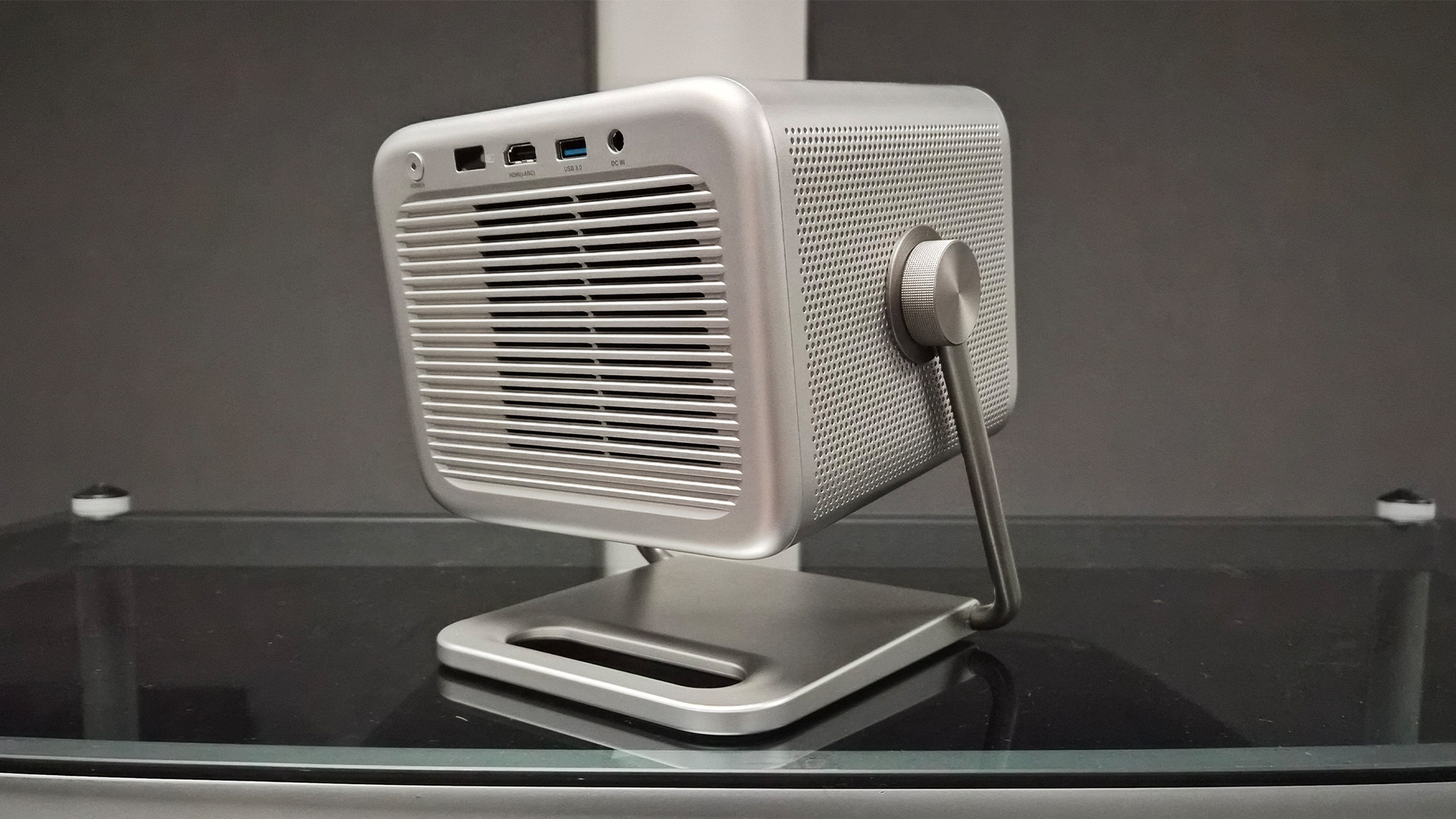
The Hisense M2 Pro isn’t perfect. But by focusing on making all the right compromises and delivering a consistent, balanced home movie experience, it gets more right than it does wrong.
This adds up to make it one of the best coffee table projectors on the market. Offering solid picture quality, excellent app support and a wonderfully easy set-up process, it ticks all the right boxes for its target market.
Unless you’re willing to spend a lot more, you’ll struggle to find a better projector.
SCORES
- Picture 5
- Sound 4
- Features 5
MORE:
Read our review of the Xgimi Horizon Ultra
Also consider the BenQ X3100i
Best projectors: budget, 4K and ultra-short-throw

Alastair is What Hi-Fi?’s editor in chief. He has well over a decade’s experience as a journalist working in both B2C and B2B press. During this time he’s covered everything from the launch of the first Amazon Echo to government cyber security policy. Prior to joining What Hi-Fi? he served as Trusted Reviews’ editor-in-chief. Outside of tech, he has a Masters from King’s College London in Ethics and the Philosophy of Religion, is an enthusiastic, but untalented, guitar player and runs a webcomic in his spare time.
- Lewis EmpsonSenior Staff Writer
- Tom Parsons
You must confirm your public display name before commenting
Please logout and then login again, you will then be prompted to enter your display name.
